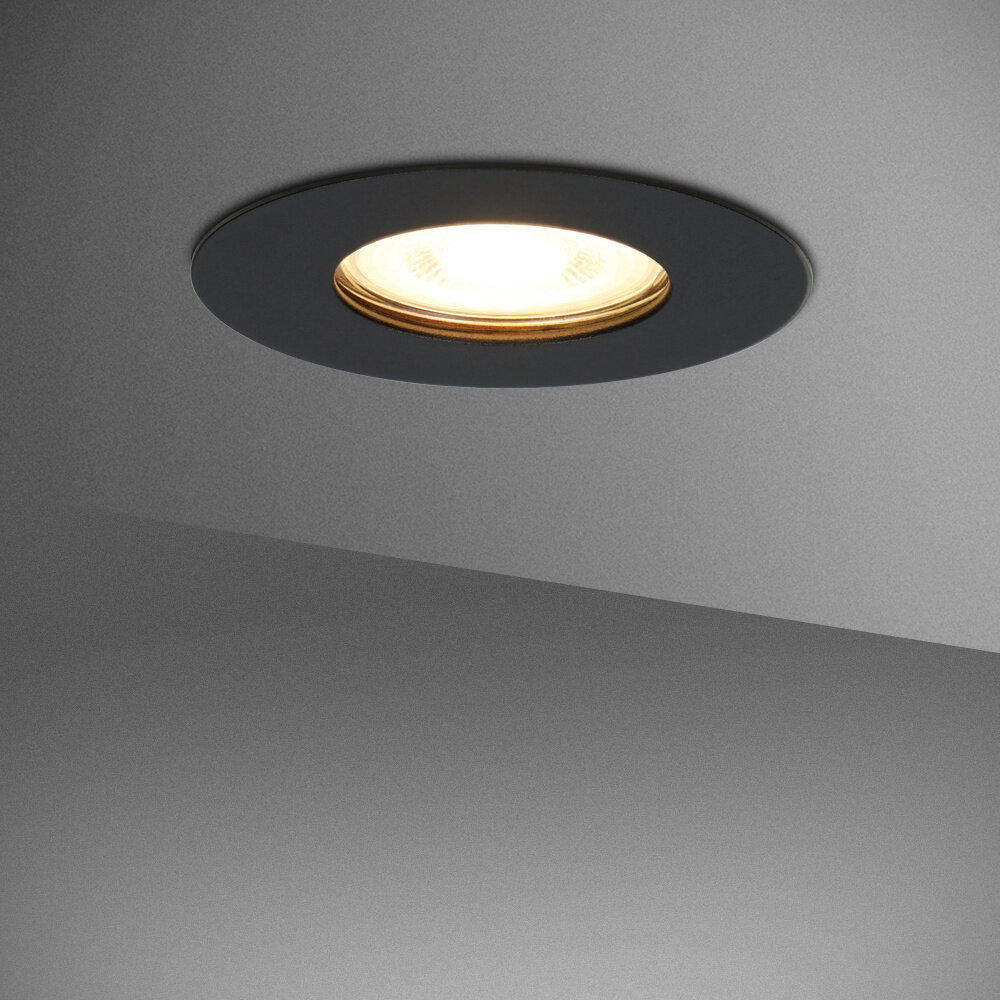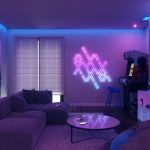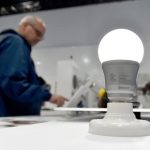Illuminate Your Space: A StepbyStep Guide on How to Connect LED Lights

Looking to add a creative touch to your room or office? Adding LED lights can be an easy and affordable way to bring some life to your space. LED lights are versatile, durable, and energy-efficient, making them a popular choice for those looking to add some ambiance to their space. However, connecting LED lights can be a bit intimidating and overwhelming, especially for those who are not familiar with electrical work. But fear not, with this step-by-step guide, you can illuminate your space in no time!This guide will provide you with a detailed and easy-to-follow process on how to connect LED lights. From selecting the right LED lights to the installation process, we’ll cover everything you need to know. Whether you’re looking to add some mood lighting to your room or wanting to create a vibrant ambiance for your workspace, this guide will help you achieve your desired look. So, grab your tools and let’s get started on illuminating your space!
LED lights, or light-emitting diodes, are a modern lighting technology that has gained popularity due to its many benefits. These lights are energy-efficient, durable, and have a longer lifespan than traditional incandescent bulbs. They are also versatile and can be used in a variety of settings, from homes to commercial spaces. LED lights come in a range of colors and brightness levels, making them an excellent choice for creating mood lighting or highlighting specific areas. Additionally, they are environmentally friendly and emit less heat, reducing the risk of fire hazards. Overall, LED lights are an excellent investment for anyone looking for a cost-effective and sustainable lighting solution.
Proper installation of LED lights is of utmost importance, as it ensures the optimal performance and longevity of the lighting system. A poorly installed LED lighting system can result in flickering lights, reduced brightness, and even circuit damage, which can be hazardous. Moreover, a well-installed LED lighting system can provide energy efficiency, improved lighting quality, and an aesthetically appealing ambiance. Therefore, it is crucial to follow the manufacturer’s instruction and guidelines for installation, use the correct wiring and connectors, and ensure that the electrical connections are secure and properly grounded to guarantee the safe and reliable functioning of the LED lighting system.
Gather Supplies

Gathering the necessary supplies is the first step in connecting LED lights to illuminate your space. You will need to prepare a few things before starting the installation process. Firstly, you need to decide on the type of LED lights you want to install, as there are many options available in the market, including strip lights, rope lights, and individual LED bulbs. Once you have decided, you need to select the appropriate length and color according to your preference. You also need to ensure that the lights you choose come with a power supply and a controller, if required. Apart from the LED lights, you will also need a few tools to install them, including a pair of scissors or wire cutters to trim the lights to the desired length, a screwdriver to secure the lights in place, and a ruler or measuring tape to ensure that the lights are installed evenly. Additionally, you may need some adhesive tapes or clips to help fix the lights onto the surface. Once you have gathered all the necessary supplies, you are ready to proceed with the installation process and illuminate your space with beautiful LED lights.
Before starting any electrical project, it is essential to gather all the necessary supplies to ensure a safe and successful installation. To connect LED lights, you will need a few basic items such as LED lights (of course), a power supply, a connector kit, and a screwdriver. Depending on the type of installation, you may also need wire strippers, electrical tape, and a drill. It’s crucial to ensure that you have the correct type of LED lights and power supply for your project, and that all the components are compatible with each other. With all the necessary supplies on hand, you’ll be well on your way to illuminating your space with beautiful LED lights.
Choosing the right LED lights for your space can make all the difference in creating a warm and inviting ambiance. One of the most important factors to consider is the color temperature, which can range from warm white to cool white. The warmer tones create a cozy and inviting atmosphere, while cooler tones are great for task lighting. Another important factor is the brightness or lumens, which should be chosen according to the size and purpose of the space. Finally, it is important to consider the style of the LED lights, as they come in a variety of shapes and sizes to fit any decor. By carefully considering these factors, you can easily find the perfect LED lights to illuminate your space.
Plan Your Layout

Planning your layout is a crucial step in connecting LED lights to your space. It involves determining the placement of your LED lights and the wiring needed to power them. Before you start, it’s important to consider the purpose of the lighting and the ambiance you want to create. This will guide you in choosing the type of LED lights to use and the color temperature that suits the space. Once you have a clear vision of what you want, you can start planning the layout. To plan your layout, start by sketching your space and marking the areas where you want to install the LED lights. Consider the size of the area, the height of the ceiling, and the furniture placement. This will help you determine the number of LED strips or bulbs needed and their placement. You should also consider the power source and the wiring needed to connect the LED lights. If you’re not familiar with electrical work, it’s best to hire a professional to ensure safety and compliance with building codes. With a well-planned layout, you can create a beautiful and functional lighting design that enhances your space’s ambiance and mood. In conclusion, planning your layout is an essential step in connecting LED lights to your space. It allows you to visualize the final result, determine the number and placement of LED lights, and ensure safety and compliance with building codes. With a clear vision, careful planning, and the right professional help, you can create a lighting design that illuminates your space and enhances its beauty and functionality.
Before you start to connect and install LED lights for your space, it’s essential to measure the area where you want to install them. Measuring your space will ensure that you have the correct amount of LED lights and accessories needed for your project. First, determine the length and width of the room or area you want to illuminate. Then, measure the height of the ceiling and any furniture or objects that may obstruct or affect the lighting. Consider the placement of electrical outlets and switches, as well as any potential wiring obstacles. Accurate measurements will help you plan and execute your LED lighting project effectively, resulting in a beautifully lit space.
Creating a design plan is the first and most important step in connecting LED lights. It allows the user to visualize how the lights will be installed, what equipment is needed, and how much time and effort will be required. The plan should include the layout of the space, the number and type of lights needed, the power source, and any necessary accessories. The user should also consider the color and intensity of the lights, as well as any special effects they want to achieve. A well-designed plan will ensure that the installation process is smooth and efficient, and that the end result is a beautiful and functional lighting system that enhances the space.
The placement of lights is crucial in creating a desired atmosphere for any space. It is important to consider the purpose of the room and the type of lighting that will enhance its functionality. For example, in a kitchen, task lighting should be placed above work areas, such as countertops and the stove, to provide ample illumination for preparing meals. In contrast, in a bedroom, soft ambient lighting can be used to create a relaxing environment for sleeping. It is also important to consider the placement of lights in relation to furniture and decor. Lights should be placed to highlight artwork or decor pieces, and not be obstructed by furniture. By carefully considering the placement of lights, one can achieve a well-lit and aesthetically pleasing space.
Connect the LED Lights

Connecting LED lights is a simple and fun process that can add a new dimension to your space. Whether you are looking to create a cozy ambiance or add a pop of color to your room, LED lights are a great choice. The first step is to gather all the necessary tools, including LED lights, a power supply, connectors, and any necessary accessories. Once you have all the materials, you can begin the process of connecting your LED lights. Start by cutting the LED strip to the desired length and then connecting it to the power supply. Be sure to follow the manufacturer’s instructions carefully and ensure that the power supply matches the requirements of the LED lights. Once the LED lights are connected to the power supply, it is time to add any necessary connectors or accessories. These can include extension cables, dimmer switches, and color controllers. By adding these accessories, you can customize your LED lights to suit your specific needs and preferences. Once everything is connected, you can test the lights to ensure they are working properly. With a little bit of patience and attention to detail, you can create a beautiful and unique lighting display that will enhance your space and make it feel more inviting and comfortable.
LED light strips are a great way to add a pop of color and ambiance to any room. Connecting them may seem overwhelming at first, but it’s actually quite simple. First, ensure that the LED light strips are the correct length for the area you want to illuminate. Next, make sure the power supply is unplugged before connecting the LED strip to the power source. Once you have connected the power supply, connect the LED strip to the power supply by matching the positive and negative ends of the wires. Finally, test the LED light strip to ensure it is working properly. With these simple steps, you can easily connect LED light strips and transform your space with beautiful, ambient lighting.
Adding LED lights is an excellent way to enhance the ambiance of your space. The process of connecting LED lights to a power source is relatively simple and straightforward. First, identify the location where you want to place the lights. Secondly, measure the length of the area to be covered by the LED lights. Thirdly, purchase the required length of LED lights and a power supply. Fourthly, connect the LED lights to the power supply using connectors or soldering. Finally, test the lights to ensure that they are working correctly. With a little bit of patience and attention to detail, you can easily connect LED lights to your power source and transform your space into a vibrant and well-lit area.
Connecting LED lights can be an exciting and creative way to add some ambiance to your space. However, like any electrical installation, it is not uncommon to encounter some issues along the way. Some common problems include loose connections, faulty wires or adapters, and incorrect wiring. In the case of loose connections, it is important to ensure that all connections are secure and tightened. Faulty wires or adapters can be identified by testing with a multimeter or replacing them altogether. Incorrect wiring can lead to short circuits, so it is crucial to follow the manufacturer’s instructions carefully. By troubleshooting these issues, you can successfully connect your LED lights and create a stunning illuminated space.
Customize Your Lighting

Customizing your lighting is one of the simplest ways to add a unique touch to your home or workspace. With LED lights, you have endless options to choose from, including color, brightness, and even patterns. Whether you want to create a cozy atmosphere or an energetic vibe, LED lights can help you achieve your desired look. Moreover, you can adjust the lighting according to your needs and preferences, making it ideal for any occasion. LED lights are not only versatile but also energy-efficient, making them a cost-effective solution for illuminating your space. By customizing your lighting, you can save money on energy bills while enhancing the aesthetics of your home. Additionally, LED lights have a longer lifespan than traditional bulbs, which means you won’t have to replace them as often. With a little creativity and imagination, you can transform any room into a personalized haven that reflects your style and personality. So why settle for dull and boring lighting when you can customize your space with LED lights?
Adding dimmer switches to your LED lighting system can significantly enhance the ambiance of your space. With the ability to adjust the brightness of your lights, you can create different moods and atmospheres to suit any occasion. Installing a dimmer switch is a relatively simple process that involves replacing your regular switch with a dimmer switch. However, it is essential to ensure that your LED lights are compatible with the dimmer switch you choose. Using a dimmer switch that is not compatible with your LED lights can cause flickering or even damage to the bulbs. Once you have ensured compatibility, installing a dimmer switch can be a quick and easy way to elevate the atmosphere of any room.
Color changing LEDs are a popular choice for adding an immersive and dynamic atmosphere to any space. With their ability to switch between a spectrum of colors, they can be used to create a range of moods and settings. From warm, intimate reds to cool, calming blues, the possibilities are endless. These LED lights are also energy efficient, which means they can be left on for longer periods of time without worrying about high energy bills. Color changing LEDs can be used in a variety of settings, from homes and offices to restaurants and nightclubs, and can be controlled remotely or through a smartphone app, allowing for easy customization of the lighting experience. Whether you want to create a cozy reading nook or set the stage for a party, color changing LEDs are an excellent choice.
Creating a smart lighting system is a great way to add convenience and energy efficiency to your home. To get started, you’ll need to choose the right LED lights for your space and connect them to a smart hub or control device. Once you’ve done that, you can use voice commands or an app to control your lights, set schedules, and adjust brightness levels. With a smart lighting system, you can create custom lighting scenes for different moods and activities, such as a relaxing ambiance for movie night or a bright and energizing setting for work. Plus, you can save energy by setting your lights to turn off automatically when you leave a room or dimming them during the day when natural light is abundant. Overall, a smart lighting system is a simple and effective way to upgrade your home’s lighting and make your life easier.
Proper installation of LED lights is of utmost importance as it ensures safety and longevity of the lighting system. A poorly installed LED light may not only cause electrical hazards but also lead to inefficient performance and damage to the light itself. It is crucial to follow the manufacturer’s instructions and ensure that all electrical connections are secure and properly grounded. Additionally, the correct wattage and voltage must be used to prevent overheating and subsequent failure of the LED lights. A well-installed LED lighting system not only enhances the aesthetics of your space but also saves energy and reduces the environmental impact. Therefore, it is imperative to take the necessary steps to ensure a proper installation of LED lights for a safe, efficient, and sustainable lighting solution.
When it comes to illuminating your space with LED lights, there are a few final tips and pieces of advice to keep in mind. First, consider the placement of your lights carefully. Think about the areas of your space that you want to highlight, and make sure your lights are positioned in a way that will achieve the desired effect. Additionally, remember to use the right type of LED lights for your space. Different lights will have different levels of brightness and color temperature, so be sure to choose the ones that will work best for your needs. Finally, don’t be afraid to experiment with different configurations and designs until you find the perfect look for your space. With a little creativity and some careful planning, you can use LED lights to transform any room in your home.
Conclusion

In conclusion, connecting LED lights can seem like a daunting task, but with the right tools and a step-by-step guide, it can be a fun and rewarding DIY project. Whether you’re looking to add some ambiance to your living room, create a cozy reading nook, or add a pop of color to your workspace, LED lights are a versatile and energy-efficient solution. By following the steps outlined in this guide, you’ll be able to illuminate your space in no time. So don’t be afraid to get creative and experiment with different colors, patterns, and placement options to find the perfect lighting setup for your unique style and needs. With a little patience and practice, you’ll soon be a pro at connecting LED lights and transforming any room into a glowing oasis.




